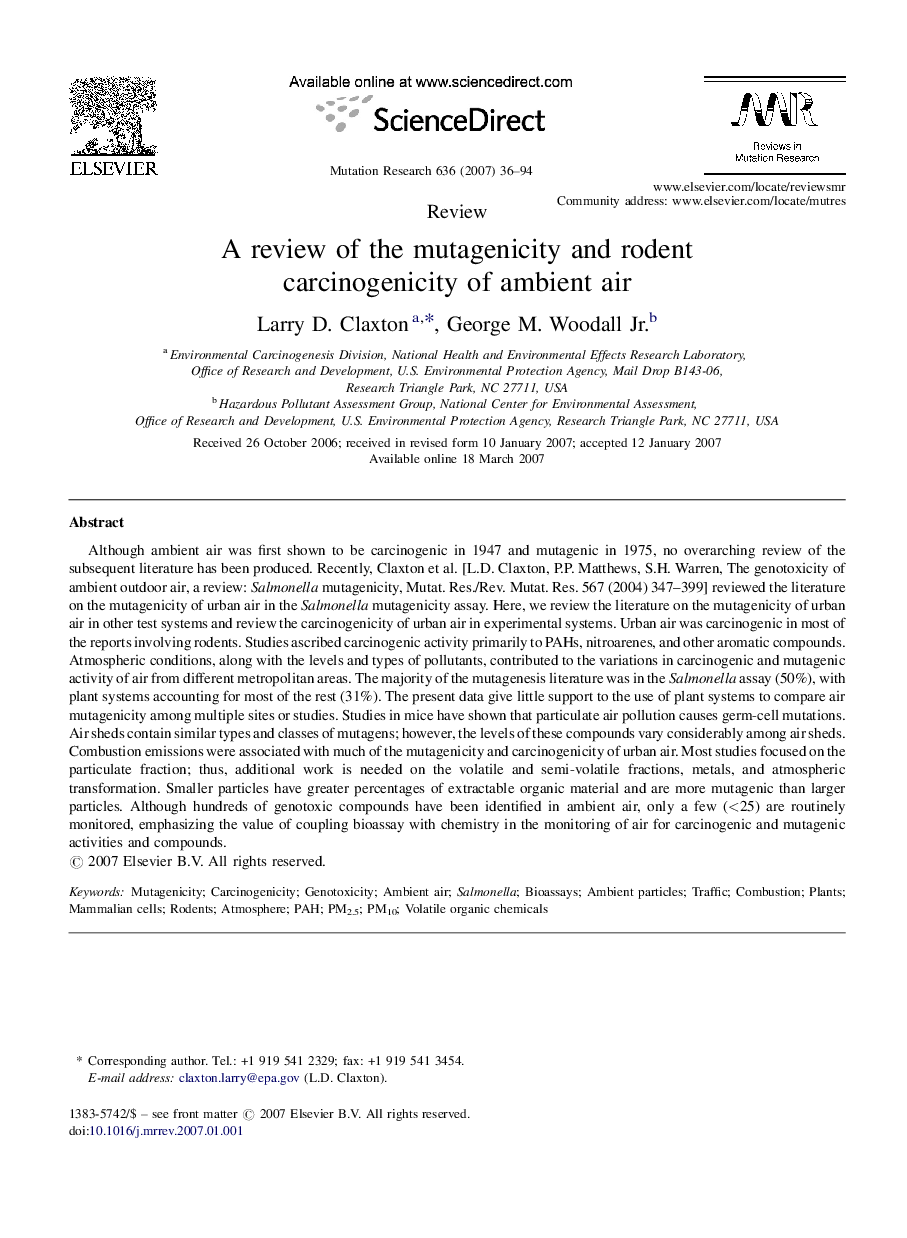| کد مقاله | کد نشریه | سال انتشار | مقاله انگلیسی | نسخه تمام متن |
|---|---|---|---|---|
| 2149916 | 1548763 | 2007 | 59 صفحه PDF | دانلود رایگان |

Although ambient air was first shown to be carcinogenic in 1947 and mutagenic in 1975, no overarching review of the subsequent literature has been produced. Recently, Claxton et al. [L.D. Claxton, P.P. Matthews, S.H. Warren, The genotoxicity of ambient outdoor air, a review: Salmonella mutagenicity, Mutat. Res./Rev. Mutat. Res. 567 (2004) 347–399] reviewed the literature on the mutagenicity of urban air in the Salmonella mutagenicity assay. Here, we review the literature on the mutagenicity of urban air in other test systems and review the carcinogenicity of urban air in experimental systems. Urban air was carcinogenic in most of the reports involving rodents. Studies ascribed carcinogenic activity primarily to PAHs, nitroarenes, and other aromatic compounds. Atmospheric conditions, along with the levels and types of pollutants, contributed to the variations in carcinogenic and mutagenic activity of air from different metropolitan areas. The majority of the mutagenesis literature was in the Salmonella assay (50%), with plant systems accounting for most of the rest (31%). The present data give little support to the use of plant systems to compare air mutagenicity among multiple sites or studies. Studies in mice have shown that particulate air pollution causes germ-cell mutations. Air sheds contain similar types and classes of mutagens; however, the levels of these compounds vary considerably among air sheds. Combustion emissions were associated with much of the mutagenicity and carcinogenicity of urban air. Most studies focused on the particulate fraction; thus, additional work is needed on the volatile and semi-volatile fractions, metals, and atmospheric transformation. Smaller particles have greater percentages of extractable organic material and are more mutagenic than larger particles. Although hundreds of genotoxic compounds have been identified in ambient air, only a few (<25) are routinely monitored, emphasizing the value of coupling bioassay with chemistry in the monitoring of air for carcinogenic and mutagenic activities and compounds.
Journal: Mutation Research/Reviews in Mutation Research - Volume 636, Issues 1–3, November–December 2007, Pages 36–94